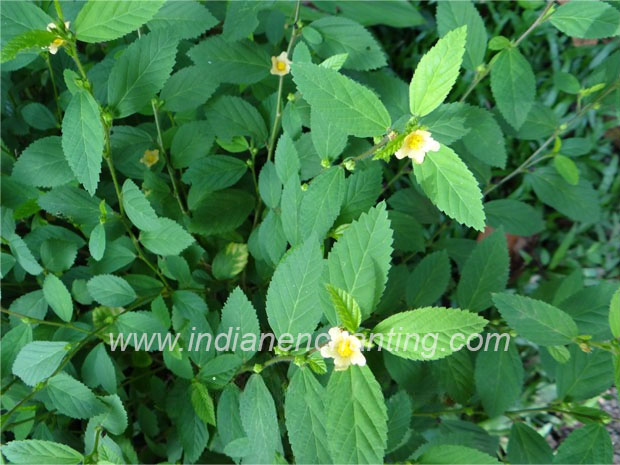
Anakuruntotti ആനകുറുന്തൊട്ടി
Botanical name: Sida rhombifolia Linn
PLANT NAME IN DIFFERENT LANGUAGES
Sanskrit: Atibala, Hastibala, Mahasamanga, Vadhyala
English: Arrowleaf Sida
Hindi: Barela, Lalbarela Malayalam: Aanakuruntotti, Vankuruntotti
MEDICINAL PROPERTIES
The stems are erect to sprawling and branched, growing 50 to 120 centimetres in height, with the lower sections being woody. The dark green, diamond-shaped leaves are arranged alternately along the stem, 4 to 8 centimetres long, with petioles that are less than a third of the length of the leaves. They are paler below, with short, greyish hairs. The apical half of the leaves has toothed or serrated margins while the remainder of the leaves are entire (untoothed). The petioles have small spiny stipules at their bases.
The moderately delicate flowers occur singly on flower stalks that arise from the area between the stems and leaf petioles. They consist of five petals that are 4 to 8 millimeters long, creamy to orange-yellow in colour, and may be somewhat reddish in the centre. Each of the five overlapping petals are asymmetric, having a long lobe on one side. The stamens unite in a short column. The fruit is a ribbed capsule, which breaks up into 8 to 10 segments. The plant blooms throughout the year.
This species is usually confined to waste ground, such as roadsides and rocky areas, stock camps or rabbit warrens, but can be competitive in pasture, due to its unpalatability to livestock.
The Root of Aanakuruntotti is used vata, pitta, pain, asthma, bronchitis and urinary problem due to viper bite.
